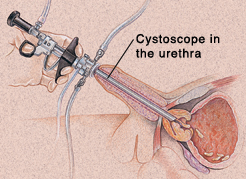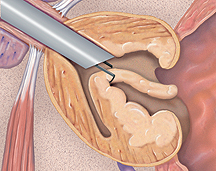TURP is a type of surgery used to treat a benign enlargement of the prostate, also known as BPH (benign prostatic hyperplasia). This surgical treatment removes prostate tissue to relieve pressure on the urethra. This helps relieve symptoms. TURP is the most common BPH procedure. But certain other procedures also help relieve BPH symptoms. Your doctor may do one of these instead of TURP. They include TUIP, TUNA, or laser ablation. If you will have one of these procedures, your doctor can tell you more about it. Your preparation and experience during surgery will be similar to TURP.
Preparing for Surgery
Your doctor will tell you how to prepare for your procedure. For instance, you may be asked to stop taking certain medications a few days before the procedure. If your procedure will be done in a hospital, you may be asked not to eat or drink anything after the midnight before surgery. Be sure to follow any special instructions you’re given.
During the TURP Procedure
- You will be given pain medication (anesthesia) to keep you from feeling pain during the procedure. It may be given to you through an IV (intravenous) line in your hand or arm. Or the medication may be injected into the fluid near your spine. These medications probably won’t put you completely to sleep. But you’ll be sleepy and feel no pain. In some cases, general anesthesia is used. This is to keep you sleeping throughout the surgery. The anesthesia doctor or nurse (anesthesiologist or nurse anesthetist) will talk to you about the pain medication that is best for you.
- The doctor inserts a cystoscope (a thin, telescope-like tool) into your urethra. This tool lets your doctor see the blocked part of the urethra.

- A tool is inserted through the cystoscope. This is used to remove the excess prostate tissue. The cut pieces of tissue collect in the bladder. The doctor then washes them out of the bladder with liquid.
- The tissue pieces are sent to the lab to be sure they are free of cancer.

Excess prostate tissue is removed during a TURP to let urine flow freely through the urethra.
Possible Risks and Complications of Prostate Procedures
|
Retrograde EjaculationAfter some surgical treatments, semen may travel into the bladder instead of out of the penis during ejaculation. This side effect is called retrograde ejaculation. As a result, there may be little or no semen when you ejaculate. This is harmless, and the feeling of orgasm won’t change. Retrograde ejaculation can also be a side effect of certain medications. |
